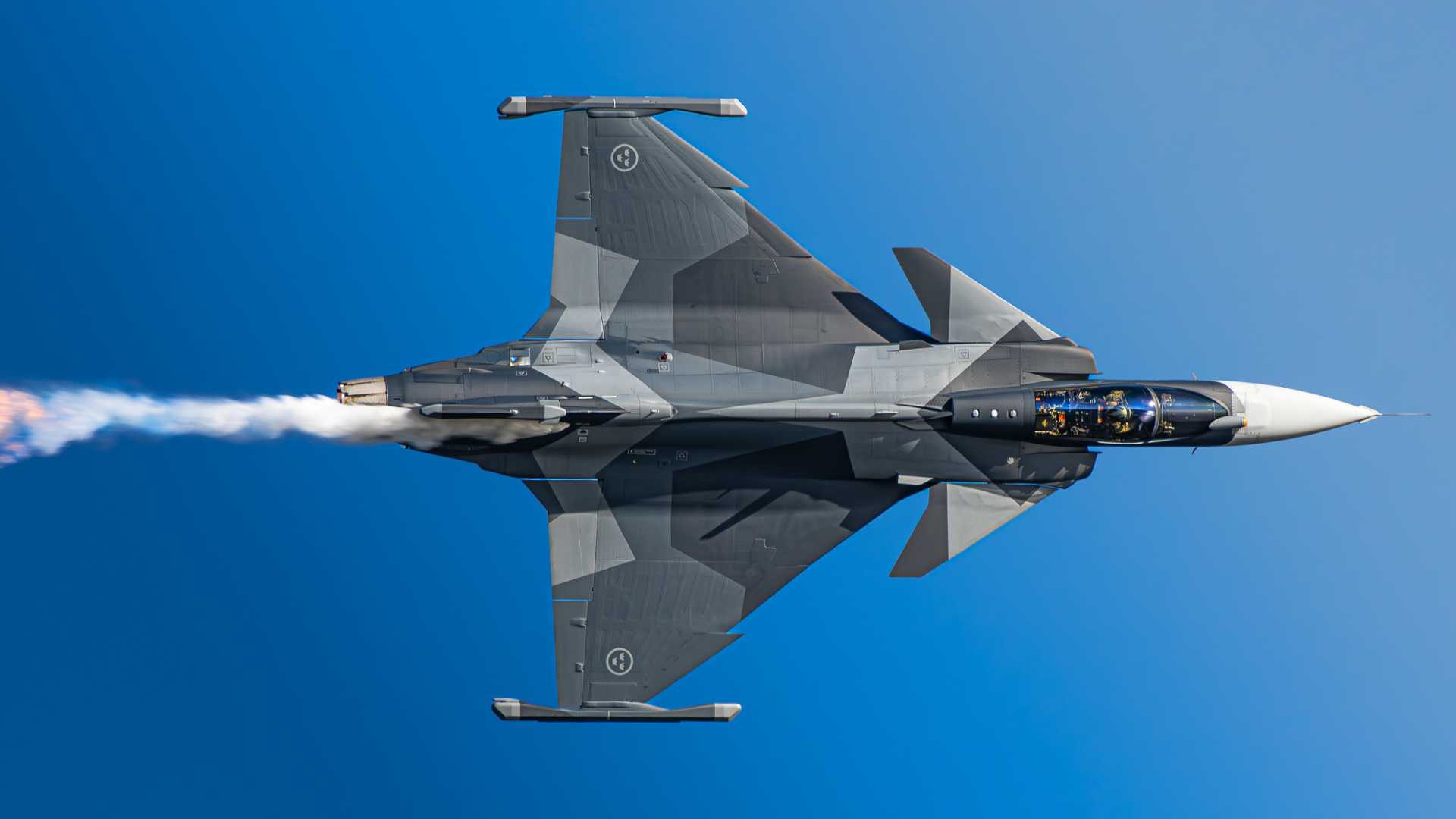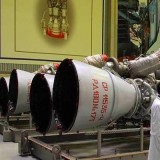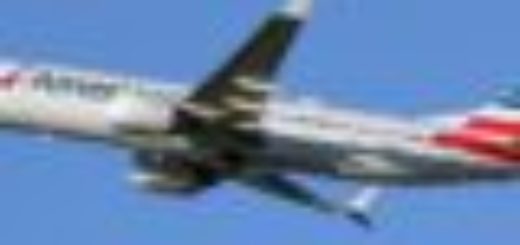Breaking News: Sweden’s Saab Gripen E/F Selected by Colombia in Fighter Jet Competition Against US F-16

{loadposition bannertop}
{loadposition sidebarpub}
On April 3, 2025, Colombian President Gustavo Petro formally announced his government’s decision to acquire the Swedish Saab JAS 39 Gripen fighter aircraft, marking a decisive step in the country’s longstanding effort to modernize its air force. The announcement follows the signing of a letter of intent with the Swedish government and the formal designation of strategic air defense as a national priority. According to Petro, the fleet to be acquired will be entirely new, utilizing the latest technology, and will be the same model already introduced in Brazil — the advanced Gripen E/F variant.Follow Army Recognition on Google News at this link
The Saab Gripen’s delta wing and canard configuration, combined with fly-by-wire controls and embedded AI for human-machine collaboration, contribute to its maneuverability. (Picture source: Raimo Roonet Aviation Photography via Facebook/Flygvapnet)
Colombia’s consideration of the Saab Gripen dates back nearly a decade, with Saab actively engaging the country’s defense institutions as early as 2016. Initial offers included the Gripen C/D and the future Gripen E variant, with Saab highlighting technology transfer, low maintenance costs, and rapid delivery timelines. The company also positioned the Gripen as a cost-effective solution aligned with Colombia’s budget constraints, emphasizing the aircraft’s operational performance from austere bases and its adaptability to asymmetric conflict environments.
Despite these efforts, the Colombian Air Force (FAC) consistently ranked the Gripen below other candidates, including the F-16, Rafale, and Eurofighter Typhoon, during earlier evaluation phases. Saab’s proposition gained renewed momentum following President Gustavo Petro’s 2022 election and a shift in political priorities. In June 2024, Petro visited Sweden and met with Saab executives, with discussions including offset proposals and financing terms. The Colombian presidency later confirmed that Saab had offered favorable conditions, including an eight-year interest-free grace period and Swedish bank financing, along with industrial offsets tied to renewable energy, healthcare, and water infrastructure.
This is all the more surprising given that Colombia previously sent a Letter of Request (LOR) to the U.S. in 2018 (during Trump’s first term) to inquire about the availability and pricing of 18 F-16C/D fighter jets from U.S. Air Force inventories. The U.S. later expanded its offer to include a mix of donated and new F-16s, potentially totaling 24 aircraft. Despite this, the Colombian Air Force did not proceed with the acquisition. Factors influencing that decision included maintenance costs, infrastructure readiness, and evolving political considerations under the current administration.
Although Saab and the Colombian government have denied that the Gripen deal has been formally blocked by a potential veto from the United States concerning the re-export of the General Electric F414 engine, multiple sources suggest that the U.S. administration has intervened to steer Colombia toward American alternatives, particularly the F-16V. U.S. efforts have reportedly included not only political pressure but also economic tariffs. These actions, perceived as an attempt to influence Colombia’s decisions solely in favor of the U.S., could have been perceived in Colombia as a threat on its strategic independence, potentially influencing the country to diversify its defense partnerships. Therefore, while the formal contract has not yet been signed with Saab, the decision marks a shift away from traditional U.S.-aligned procurement and positions Colombia to become the second Latin American operator of the Gripen, after Brazil.
Developed in cooperation with Brazil, which ordered 36 aircraft, the Gripen E, previously referred to as Gripen NG (Next Generation), represents the latest and most advanced evolution of the Gripen. (Picture source: Brazilian Air Force)
Colombia’s prospective acquisition of the same aircraft would place it within the Brazilian logistical and maintenance framework, as both the Super Tucano A-29 and Gripen are assembled or manufactured in Brazil. Colombian defense officials have raised concerns that such dependence could limit national autonomy in future operations. Moreover, while Brazil has had a lengthy experience integrating the Gripen — from contract signing in 2014 to first delivery in 2022 — it is now reportedly exploring additional acquisitions. On September 11, 2024, Brazilian Air Force Commander, Lieutenant Brigadier Marcelo Kanitz Damasceno, confirmed that the country intends to maintain a fleet of no fewer than two and no more than three types of fighter aircraft. As the F-5 is phased out, the known candidates include the Indian Tejas, the Chinese Chengdu J-10CE, the American F-16V, the French Rafale, and even the Russian Su-35.
Designed for short-field performance and ease of maintenance, the Swedish JAS 39 Gripen is a single-engine multirole fighter aircraft developed by Saab in the late 1980s to replace the Saab 35 Draken and Saab 37 Viggen in the Swedish Air Force. Designed from the outset to operate from rudimentary road bases under the Swedish Bas 90 system, the initial Gripen A/B entered service in the 1990s, followed by the C/D models, which improved NATO interoperability and updated the combat systems. Developed in cooperation with Brazil, which ordered 36 aircraft, the Gripen E, previously referred to as Gripen NG (Next Generation), represents the latest and most advanced evolution of the Gripen. It includes a larger fuselage, an upgraded engine, major upgrades in avionics, and expanded weapons capabilities.
Powered by the General Electric F414G engine, shared with the F/A-18E/F Super Hornet, the Gripen E offers a maximum thrust of 98 kN, a combat radius of more than 1,300 km without refueling, a maximum take-off weight of 16,500 kilograms, and can reach speeds up to Mach 2. The aircraft’s delta wing and canard configuration, combined with fly-by-wire controls and embedded AI for human-machine collaboration, contribute to its maneuverability. It supports air-to-air refueling to extend its operational range. Its design allows for operations in both conventional and close-range aerial engagements and is configured for dispersed deployments, including short or unprepared runways.
The Gripen E’s electronic warfare suite is one of its defining features. Offering 360-degree spherical coverage, the system integrates radar warning receivers, missile approach warners, and jamming pods. The aircraft’s electronic countermeasure capabilities allow it to degrade or suppress enemy sensors and communications, providing survivability in contested airspace. Saab emphasizes that these features make the Gripen E suitable for penetrating enemy air defenses while also supporting real-time intelligence, surveillance, and reconnaissance operations. Combined with a modular avionics system that supports rapid mission updates, these features provide electronic support, attack, and protection functions, including signal detection, countermeasures management, and electromagnetic signal analysis.
The Gripen E incorporates an open architecture system that separates mission systems from flight-critical software, allowing new capabilities to be integrated without affecting the certification of the core flight software. This modular design permits quicker software updates and adaptation to new operational requirements. The aircraft is configured for rapid turnaround, with air-to-air rearming and refueling achievable in under 20 minutes using a limited number of ground personnel and minimal equipment. It can operate in austere environments and from short, unprepared runways, making it suitable for Colombia’s geographically dispersed and rugged operational landscape.
The aircraft has ten external hardpoints that support a range of weapons and external pods. For air-to-air operations, it can carry up to seven Meteor beyond-visual-range air-to-air missiles and two IRIS-T within-visual-range missiles. For ground attack missions, the Gripen E supports various air-to-ground munitions, including guided bombs. It is also equipped with a Mauser BK-27 mm internal gun. The Gripen E is capable of performing air-to-air, air-to-ground, and reconnaissance missions, depending on payload configuration. These features allow the aircraft to fulfill multiple operational roles using a common platform. This efficiency supports high sortie rates and makes it ideal for dispersed operations, such as those required in remote Colombian regions facing insurgent or narcotics trafficking threats. Its compatibility with austere airstrips gives it a unique edge in scenarios requiring rapid deployment and mobility, which the F-16 cannot do. Whether the deal overcomes current obstacles (like those posed by the US) remains uncertain, but the Gripen E, if acquired, is poised to play a central role in Colombia’s future air power projection.
The Gripen E is configured for rapid turnaround, with air-to-air rearming and refueling achievable in under 20 minutes using a limited number of ground personnel and minimal equipment. (Picture source: Saab)

{loadposition bannertop}
{loadposition sidebarpub}
On April 3, 2025, Colombian President Gustavo Petro formally announced his government’s decision to acquire the Swedish Saab JAS 39 Gripen fighter aircraft, marking a decisive step in the country’s longstanding effort to modernize its air force. The announcement follows the signing of a letter of intent with the Swedish government and the formal designation of strategic air defense as a national priority. According to Petro, the fleet to be acquired will be entirely new, utilizing the latest technology, and will be the same model already introduced in Brazil — the advanced Gripen E/F variant.
Follow Army Recognition on Google News at this link
The Saab Gripen’s delta wing and canard configuration, combined with fly-by-wire controls and embedded AI for human-machine collaboration, contribute to its maneuverability. (Picture source: Raimo Roonet Aviation Photography via Facebook/Flygvapnet)
Colombia’s consideration of the Saab Gripen dates back nearly a decade, with Saab actively engaging the country’s defense institutions as early as 2016. Initial offers included the Gripen C/D and the future Gripen E variant, with Saab highlighting technology transfer, low maintenance costs, and rapid delivery timelines. The company also positioned the Gripen as a cost-effective solution aligned with Colombia’s budget constraints, emphasizing the aircraft’s operational performance from austere bases and its adaptability to asymmetric conflict environments.
Despite these efforts, the Colombian Air Force (FAC) consistently ranked the Gripen below other candidates, including the F-16, Rafale, and Eurofighter Typhoon, during earlier evaluation phases. Saab’s proposition gained renewed momentum following President Gustavo Petro’s 2022 election and a shift in political priorities. In June 2024, Petro visited Sweden and met with Saab executives, with discussions including offset proposals and financing terms. The Colombian presidency later confirmed that Saab had offered favorable conditions, including an eight-year interest-free grace period and Swedish bank financing, along with industrial offsets tied to renewable energy, healthcare, and water infrastructure.
This is all the more surprising given that Colombia previously sent a Letter of Request (LOR) to the U.S. in 2018 (during Trump’s first term) to inquire about the availability and pricing of 18 F-16C/D fighter jets from U.S. Air Force inventories. The U.S. later expanded its offer to include a mix of donated and new F-16s, potentially totaling 24 aircraft. Despite this, the Colombian Air Force did not proceed with the acquisition. Factors influencing that decision included maintenance costs, infrastructure readiness, and evolving political considerations under the current administration.
Although Saab and the Colombian government have denied that the Gripen deal has been formally blocked by a potential veto from the United States concerning the re-export of the General Electric F414 engine, multiple sources suggest that the U.S. administration has intervened to steer Colombia toward American alternatives, particularly the F-16V. U.S. efforts have reportedly included not only political pressure but also economic tariffs. These actions, perceived as an attempt to influence Colombia’s decisions solely in favor of the U.S., could have been perceived in Colombia as a threat on its strategic independence, potentially influencing the country to diversify its defense partnerships. Therefore, while the formal contract has not yet been signed with Saab, the decision marks a shift away from traditional U.S.-aligned procurement and positions Colombia to become the second Latin American operator of the Gripen, after Brazil.

Developed in cooperation with Brazil, which ordered 36 aircraft, the Gripen E, previously referred to as Gripen NG (Next Generation), represents the latest and most advanced evolution of the Gripen. (Picture source: Brazilian Air Force)
Colombia’s prospective acquisition of the same aircraft would place it within the Brazilian logistical and maintenance framework, as both the Super Tucano A-29 and Gripen are assembled or manufactured in Brazil. Colombian defense officials have raised concerns that such dependence could limit national autonomy in future operations. Moreover, while Brazil has had a lengthy experience integrating the Gripen — from contract signing in 2014 to first delivery in 2022 — it is now reportedly exploring additional acquisitions. On September 11, 2024, Brazilian Air Force Commander, Lieutenant Brigadier Marcelo Kanitz Damasceno, confirmed that the country intends to maintain a fleet of no fewer than two and no more than three types of fighter aircraft. As the F-5 is phased out, the known candidates include the Indian Tejas, the Chinese Chengdu J-10CE, the American F-16V, the French Rafale, and even the Russian Su-35.
Designed for short-field performance and ease of maintenance, the Swedish JAS 39 Gripen is a single-engine multirole fighter aircraft developed by Saab in the late 1980s to replace the Saab 35 Draken and Saab 37 Viggen in the Swedish Air Force. Designed from the outset to operate from rudimentary road bases under the Swedish Bas 90 system, the initial Gripen A/B entered service in the 1990s, followed by the C/D models, which improved NATO interoperability and updated the combat systems. Developed in cooperation with Brazil, which ordered 36 aircraft, the Gripen E, previously referred to as Gripen NG (Next Generation), represents the latest and most advanced evolution of the Gripen. It includes a larger fuselage, an upgraded engine, major upgrades in avionics, and expanded weapons capabilities.
Powered by the General Electric F414G engine, shared with the F/A-18E/F Super Hornet, the Gripen E offers a maximum thrust of 98 kN, a combat radius of more than 1,300 km without refueling, a maximum take-off weight of 16,500 kilograms, and can reach speeds up to Mach 2. The aircraft’s delta wing and canard configuration, combined with fly-by-wire controls and embedded AI for human-machine collaboration, contribute to its maneuverability. It supports air-to-air refueling to extend its operational range. Its design allows for operations in both conventional and close-range aerial engagements and is configured for dispersed deployments, including short or unprepared runways.
The Gripen E’s electronic warfare suite is one of its defining features. Offering 360-degree spherical coverage, the system integrates radar warning receivers, missile approach warners, and jamming pods. The aircraft’s electronic countermeasure capabilities allow it to degrade or suppress enemy sensors and communications, providing survivability in contested airspace. Saab emphasizes that these features make the Gripen E suitable for penetrating enemy air defenses while also supporting real-time intelligence, surveillance, and reconnaissance operations. Combined with a modular avionics system that supports rapid mission updates, these features provide electronic support, attack, and protection functions, including signal detection, countermeasures management, and electromagnetic signal analysis.
The Gripen E incorporates an open architecture system that separates mission systems from flight-critical software, allowing new capabilities to be integrated without affecting the certification of the core flight software. This modular design permits quicker software updates and adaptation to new operational requirements. The aircraft is configured for rapid turnaround, with air-to-air rearming and refueling achievable in under 20 minutes using a limited number of ground personnel and minimal equipment. It can operate in austere environments and from short, unprepared runways, making it suitable for Colombia’s geographically dispersed and rugged operational landscape.
The aircraft has ten external hardpoints that support a range of weapons and external pods. For air-to-air operations, it can carry up to seven Meteor beyond-visual-range air-to-air missiles and two IRIS-T within-visual-range missiles. For ground attack missions, the Gripen E supports various air-to-ground munitions, including guided bombs. It is also equipped with a Mauser BK-27 mm internal gun. The Gripen E is capable of performing air-to-air, air-to-ground, and reconnaissance missions, depending on payload configuration. These features allow the aircraft to fulfill multiple operational roles using a common platform. This efficiency supports high sortie rates and makes it ideal for dispersed operations, such as those required in remote Colombian regions facing insurgent or narcotics trafficking threats. Its compatibility with austere airstrips gives it a unique edge in scenarios requiring rapid deployment and mobility, which the F-16 cannot do. Whether the deal overcomes current obstacles (like those posed by the US) remains uncertain, but the Gripen E, if acquired, is poised to play a central role in Colombia’s future air power projection.

The Gripen E is configured for rapid turnaround, with air-to-air rearming and refueling achievable in under 20 minutes using a limited number of ground personnel and minimal equipment. (Picture source: Saab)






